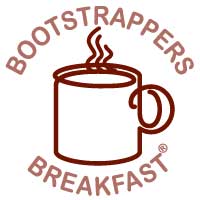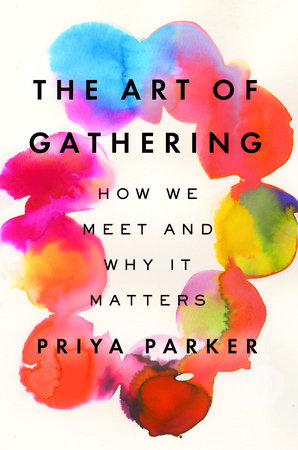Here are six practical lessons from Priya Parker‘s “The Art of Gathering.” It’s a great book that provides both practical and conceptual guidance for anyone who is planning or hosting a meeting.
Key Lessons From Priya Parker’s “The Art of the Gathering”
I collaborated with CJ Lipe of Adminologist on this post. Adminologist is located in the heart of Silicon Valley and offers a range of administrative services that includes general office administration, meeting planning, event planning, and travel coordination. We rely on her to coordinate the Bootstrapper Breakfasts® in Silicon Valley and appreciate her ability to handle a range of jobs with an even temper.
Key lessons we took away from the book
- Purpose: a gathering starts with the invitation which should define its specific purpose. This purpose should be repeated at the formal start of the gathering.
- Welcome List: deciding who to invite and who is not invited are critical steps in supporting a gathering’s purpose.
- Venue: consider how it will help to support the purpose of the gathering. The size of the gathering will give it a different ambience with thresholds for a different experience roughly at 6, 12-15, 30 and 150.
- Larger Purpose in Community: in addition to its primary purpose, a gathering should also serve to foster connections among attendees and increase a shared understanding of their needs and goals. This helps connect them with a community and a larger purpose that continues after the gathering.
- Active Host: The host needs to act with “generous authority” to spell out and gently enforce clear rules of conduct to support the purpose of the gathering.
- End cleanly: a gathering needs to have a clear end so that it finishes cleanly and energizes the attendees to fulfill its purpose.
We thought that this was a useful template for planning a variety of meetings and decided to check it against how we manage the Bootstrapper Breakfasts in Silicon Valley.
Applying These Lessons to Bootstrapper Breakfasts in Silicon Valley


- Purpose: to help bootstrapping entrepreneurs compare notes and get different and useful perspectives on challenges they face in growing their business. The promise is a serious conversation among peer entrepreneurs.
- Welcome: anyone bootstrapping a business, whether full time or navigating the work/work balance of a day job and a new startup.
- Venue: normally early morning at a large table in a breakfast cafe that is quiet enough for a group of six to twelve to conduct a single shared conversation.
- Larger Purpose: to provide ongoing peer to peer support and networking for entrepreneurs as part of a larger business community in a region.
- Active Host: the Bootstrapper Breakfasts split this role between a coordinator and a facilitator. The coordinator welcomes people when they arrive, providing a name tag and answering any questions, and managing any logistical or other venue challenges that may arise during the meeting. The facilitator starts the formal meeting, makes sure that everyone has a chance to introduce themselves and be heard, takes notes of the issues that attendees would like to discuss, and makes sure they are addressed before the end of the meeting.
- End Cleanly: the facilitator and the coordinator both keep track of the time so that the formal meeting ends on time, but normally there is a period of 15 to 30 minutes of informal networking afterward.
Related Blog Posts
- Circle the Chairs
- What to Expect at a Bootstrapper Breakfast
- Entrepreneurs Need a Community of Practice Not a Movement
- Guidelines for an Online Community of Entrepreneurs
- Find A Peer Group Who is Interested In What You Have To Say
Image Credit: Penguin Random House

